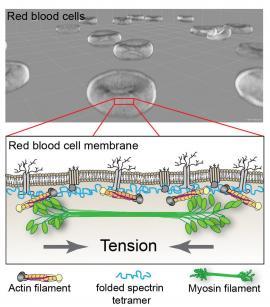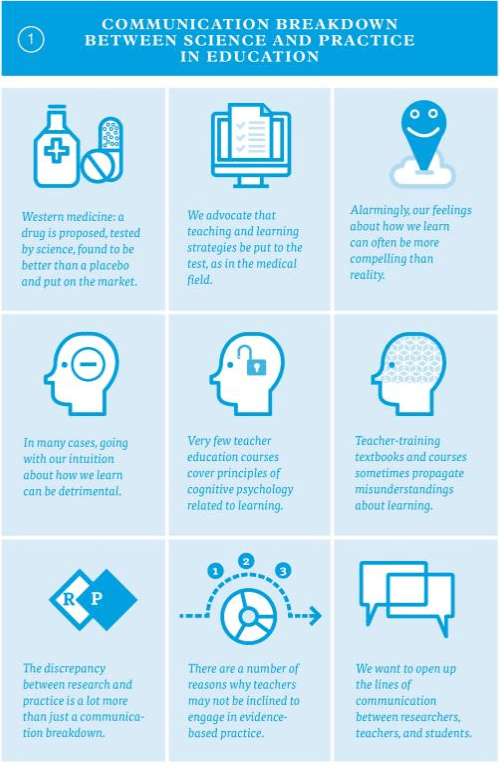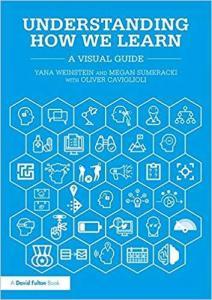0:59 | New discovery about the shape of red blood cells
4:54 | Featured: Chat with the authors of a new book about how we learn
If you cannot see or activate the audio player click here.
Follow The A&P Professor on Twitter, Facebook, Blogger, Nuzzel, Tumblr, or Instagram!
"Educational practice does not, for the most part, rely on research findings. Instead, there's a preference for relying on our intuitions about what's best for learning. But relying on intuition may be a bad idea for teachers and learners alike."
Yana Weinstein & Megan Sumeracki in Understanding How We Learn: A Visual Guide
1 | Regulation of Red Blood Cell Shape 4 minutes
Recent evidence points to a myosin-actin interaction in the cytoskeleton connected to the plasma membrane as a key mechanism for regulating RBC deformability. Thus that old myosin-actin attraction learned while exploring muscle contraction accomplishes important tasks in other parts of the body, too!
- Healthy red blood cells owe their shape to muscle-like structures (brief synopsis)
- Myosin IIA interacts with the spectrin-actin membrane skeleton to control red blood cell membrane curvature and deformability (research article)

2 | Understanding How We Learn: A Visual Guide 23 minutes
Dr. Yana Weinstein and Dr. Megan Sumeracki join Kevin for an informative chat about their new book Understanding How We Learn: A Visual Guide. These learning scientists explain how A&P professors can use the six strategies for learning in their courses to help students learn.
- Understanding How We Learn: A Visual Guide (the book; multiple formats available)
- Featured in The A&P Professor Book Club
- learningscientists.org (the website for The Learning Scientists; links to blog, podcast, videos, downloadable resources; good link to share with your A&P students)
- @AceThatTest (follow The Learning Scientists on Twitter)
- Related resources from The A&P Professor
- Episode 1: Spaced Retrieval Practice (the pilot episode of this podcast explored Kevin's experience with combining spacing and retrieval practice (discussed by Weinstein & Sumeracki in today's chat).
- Episode 7: Teaching for Long Term Learning
- Seminar: Long Term Learning | Five Strategies for Teaching A&P
Please call in with your reactions, questions for the authors, comments, and ideas for implementing the tips in this book:
- 1-833-LION-DEN or 1-833-546-6336
- podcast@theAPprofessor.org
Here's an example of a visual chapter preview mentioned in the interview.
 Sample from Understanding How We Learn: A Visual Guide
Sample from Understanding How We Learn: A Visual Guide
If the hyperlinks here are not active or images do not appear, go to TAPPradio.org to find the episode page.
- More details at the episode page.
- Transcript available at the script page.
- Listen to any episode on your Alexa device.
- Join The A&P Professor social network:
- Blog
- Twitter @theAPprofessor
- Facebook theAPprofessor
- Instagram theAPprofessor
- YouTube
Amazon referrals help defray podcasting expenses.
Click here to listen to this episode—or access the detailed notes and transcript.


No comments:
Post a Comment